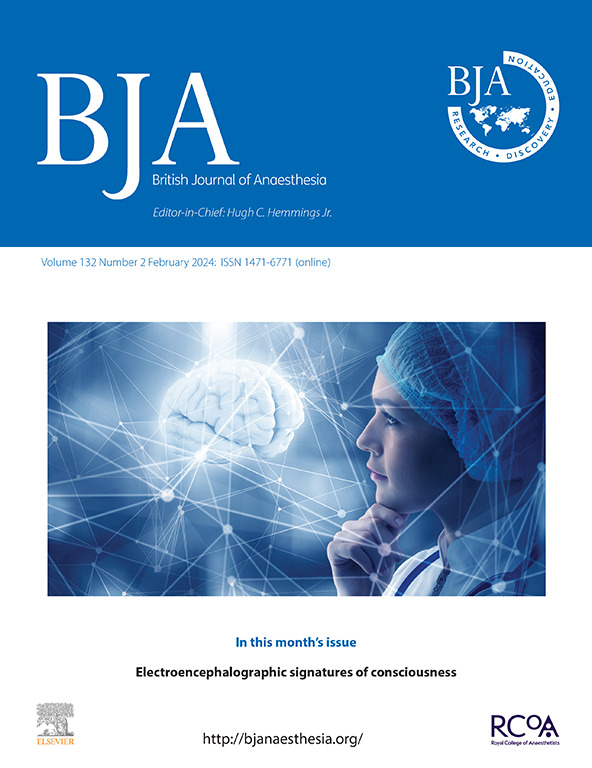The future of sound in patient monitoring: a call to action to embrace the evidence and move forward
IF 9.1
1区 医学
Q1 ANESTHESIOLOGY
引用次数: 0
Abstract
Patient monitoring systems have relied on beeping alarm sounds for the past 70 years, yet evidence suggests that these conventional tones limit alarm effectiveness, informativeness, and user situation awareness. More advanced alarm modalities, such as auditory icons and voice alerts, offer more intuitive approaches, and were found to improve alarm detection and reduce caregiver workload. Made possible by adoptions of international standards, and supported by evidence, the future of patient monitoring alarm sounds might incorporate conventional alarm tones with auditory icons, voice alerts, and advanced visualisations to better support caregivers and reduce alarm fatigue in patients and caregivers. Sound examples for advanced alarm modalities, comparisons with conventional alarm sounds, and alarm sound examples from aviation are provided in an online supplementary video.
健全的病人监护的未来:呼吁采取行动,接受证据并向前迈进
在过去的70年里,病人监测系统一直依赖于蜂鸣声报警,但有证据表明,这些传统的声音限制了报警的有效性、信息量和用户的情况意识。更先进的警报模式,如听觉图标和语音警报,提供了更直观的方法,并且发现可以提高警报检测并减少护理人员的工作量。通过采用国际标准,并有证据支持,未来的患者监测警报声音可能会将传统的警报声音与听觉图标、语音警报和先进的可视化相结合,以更好地支持护理人员,并减少患者和护理人员的警报疲劳。在一个在线补充视频中提供了先进警报模式的声音示例,与传统警报声音的比较,以及来自航空的警报声音示例。
本文章由计算机程序翻译,如有差异,请以英文原文为准。
求助全文
约1分钟内获得全文
求助全文
来源期刊
CiteScore
13.50
自引率
7.10%
发文量
488
审稿时长
27 days
期刊介绍:
The British Journal of Anaesthesia (BJA) is a prestigious publication that covers a wide range of topics in anaesthesia, critical care medicine, pain medicine, and perioperative medicine. It aims to disseminate high-impact original research, spanning fundamental, translational, and clinical sciences, as well as clinical practice, technology, education, and training. Additionally, the journal features review articles, notable case reports, correspondence, and special articles that appeal to a broader audience.
The BJA is proudly associated with The Royal College of Anaesthetists, The College of Anaesthesiologists of Ireland, and The Hong Kong College of Anaesthesiologists. This partnership provides members of these esteemed institutions with access to not only the BJA but also its sister publication, BJA Education. It is essential to note that both journals maintain their editorial independence.
Overall, the BJA offers a diverse and comprehensive platform for anaesthetists, critical care physicians, pain specialists, and perioperative medicine practitioners to contribute and stay updated with the latest advancements in their respective fields.

 求助内容:
求助内容: 应助结果提醒方式:
应助结果提醒方式:


